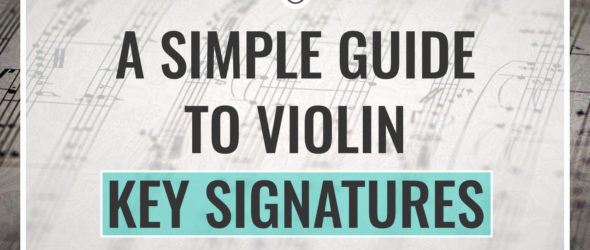When it comes to understanding key signatures, some beginning violinists can be intimidated due to the amount of complex information out there. Often, if they are not taking formal violin lessons, they will skip learning it altogether.
Today, I will show you all the basics you need to know about key signatures so you can use them in your music practice! By the end of this guide, you will understand each key signature, no matter if you currently have a violin teacher or not.
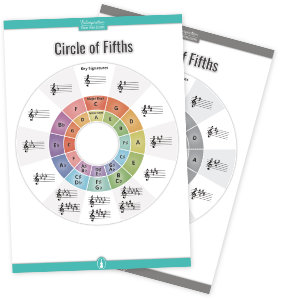
Printable Circle of Fifths
color and grayscale version
What are Violin Key Signatures?
Have you ever noticed a group of sharp or flat signs written at the beginning of a stave?
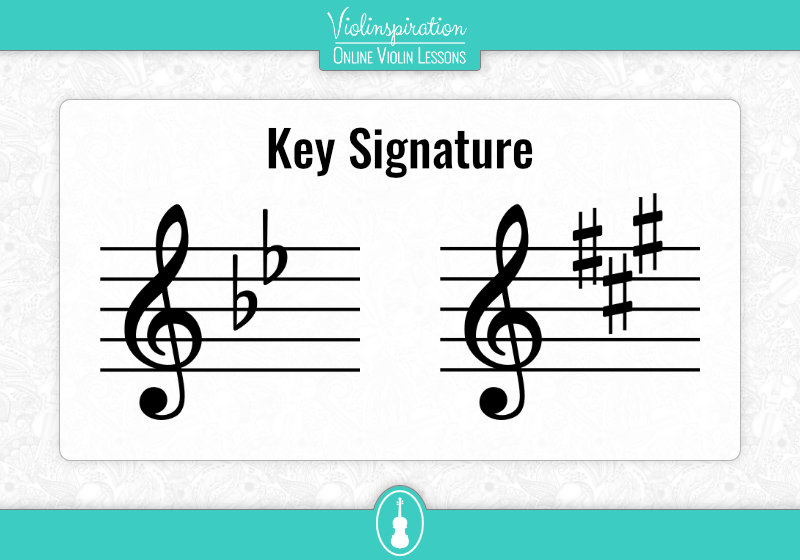
This is a key signature!
A key signature is normally repeated at the beginning of each line of sheet music:
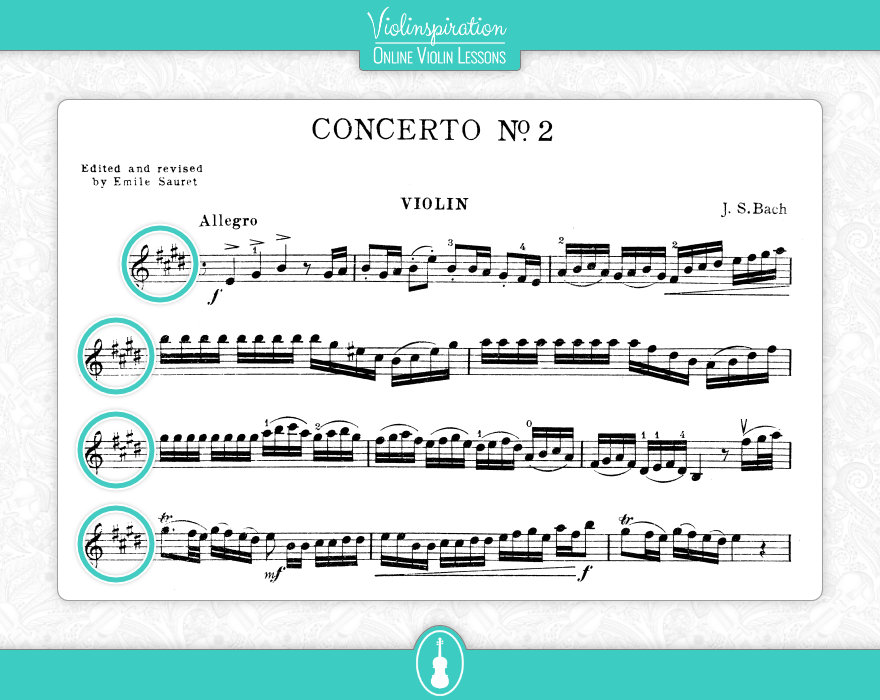
Key signatures can also change within a piece.
Here is an example of that:
Note how you can see three different key signatures in the part of the piece starting at 3:35.
The violinist starts playing in a key signature with 1 flat, then continues playing in 2 flats and then continues playing in a key signature with 5 flats.
You might not be surprised that the violin concerto of Sibelius is one of the most difficult violin concertos ever written.
On a side note: this is also my personal favourite violin concerto. If you don’t know it yet, I recommend listening to it.
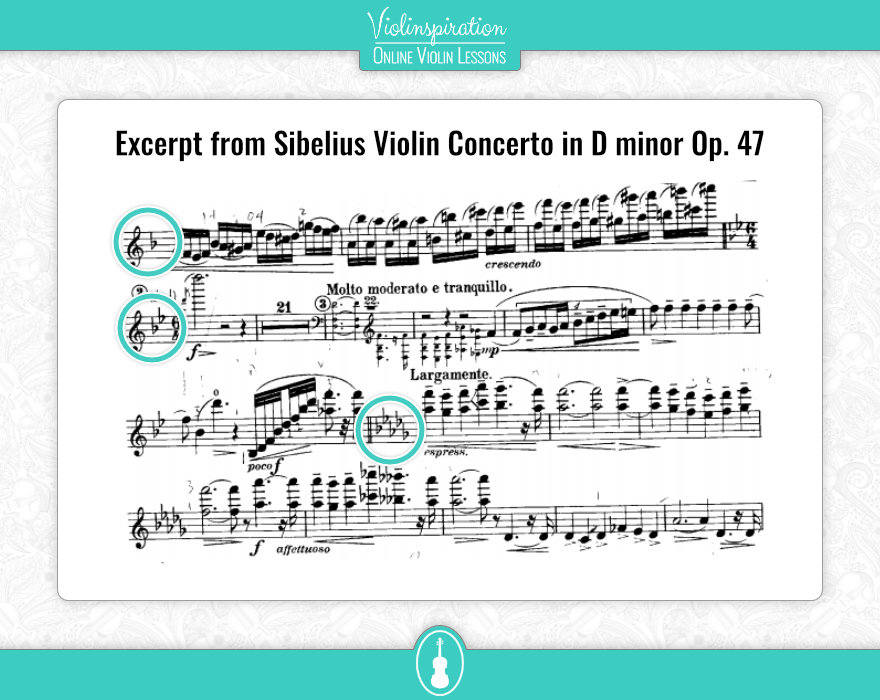
If you have been playing the violin for a while, you might have noticed that some pieces do not have any sharps and flats displayed in front of the piece.
The beginning of the piece looks like this:
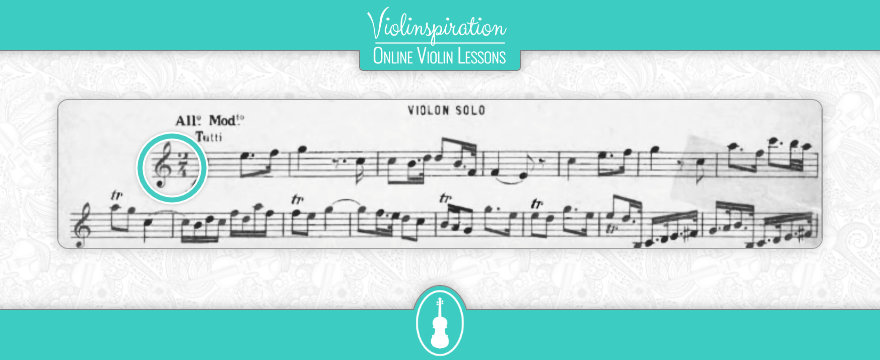
Or otherwise said: there are no sharps and flats displayed at the beginning of each line.
Does that mean these pieces do not have a key signature?
No!
There is one key signature that does not have any sharps or flats.
That is the key signature of C Major and A Minor. It looks like this:
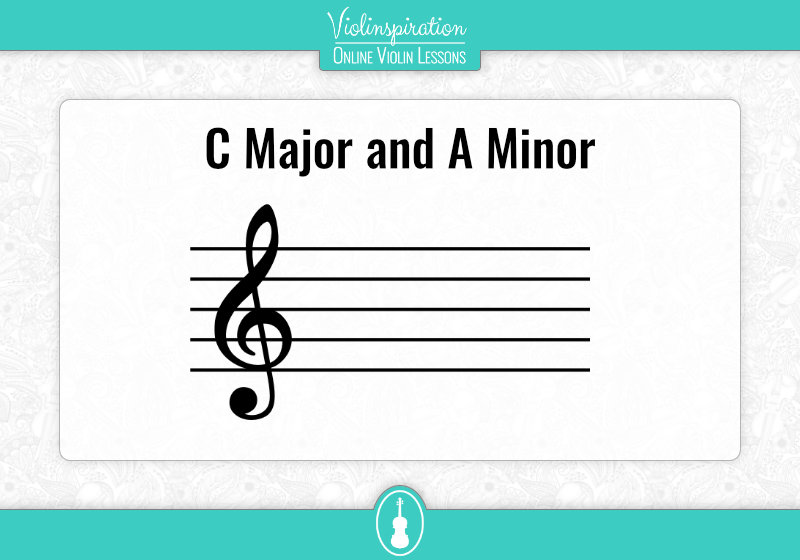
Basically, if you don’t see any sharps or flats in front of a line of notes, you know that the piece is written either in the C Major or the A Minor key signature.
Here you can see an example of a piece written in C Major:
I know you might ask: “But Julia, how do I know if a piece is written in C Major or A Minor, if the key signature looks the same?”
Good question!
I will discuss that later in this post.
First you need to understand exactly what key signatures are and what function they fulfill in sheet music.
Understanding Flats, Sharps and Naturals
The first step to understanding key signatures is to understand how flats and sharps work in note reading.
The positions of the sharp (#) or flat (b) signs tell us which notes need to be sharpened (raised by a half step) or flattened (lowered by a half step).
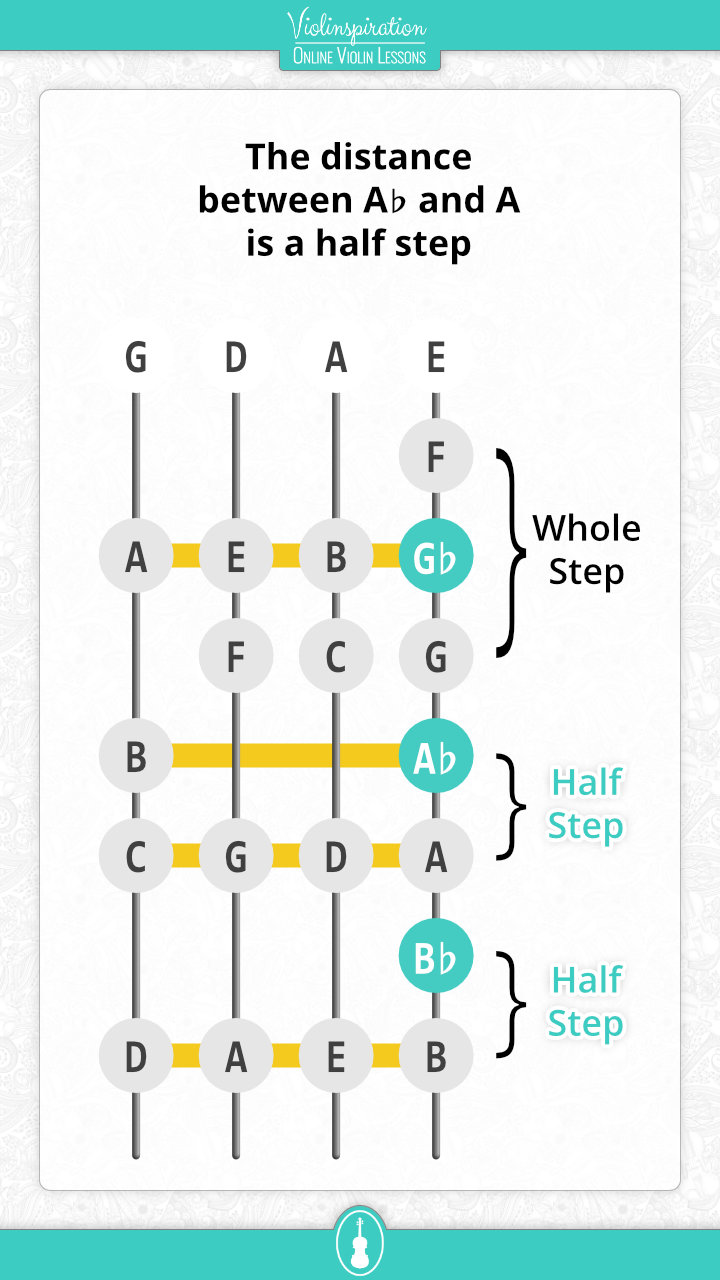
If a flat sign is placed before a note, it means you will have to play that note half a tone lower.
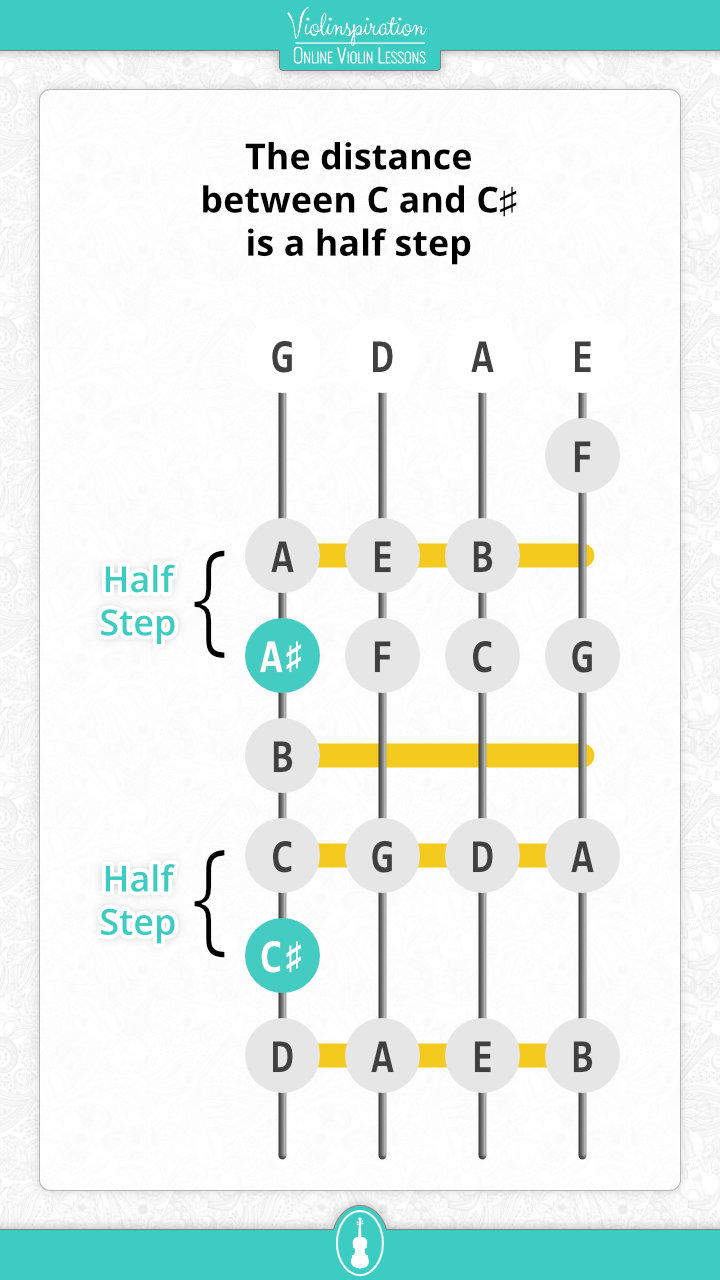
If a sharp sign is added before a note, it means you will have to play the note half a tone higher.
There is one special sign – a natural.
The natural basically says “undo” whatever I said before. So if the composer first wrote a C# but then wants to write a C – they can place a natural before the C to “undo” the sharp sign.
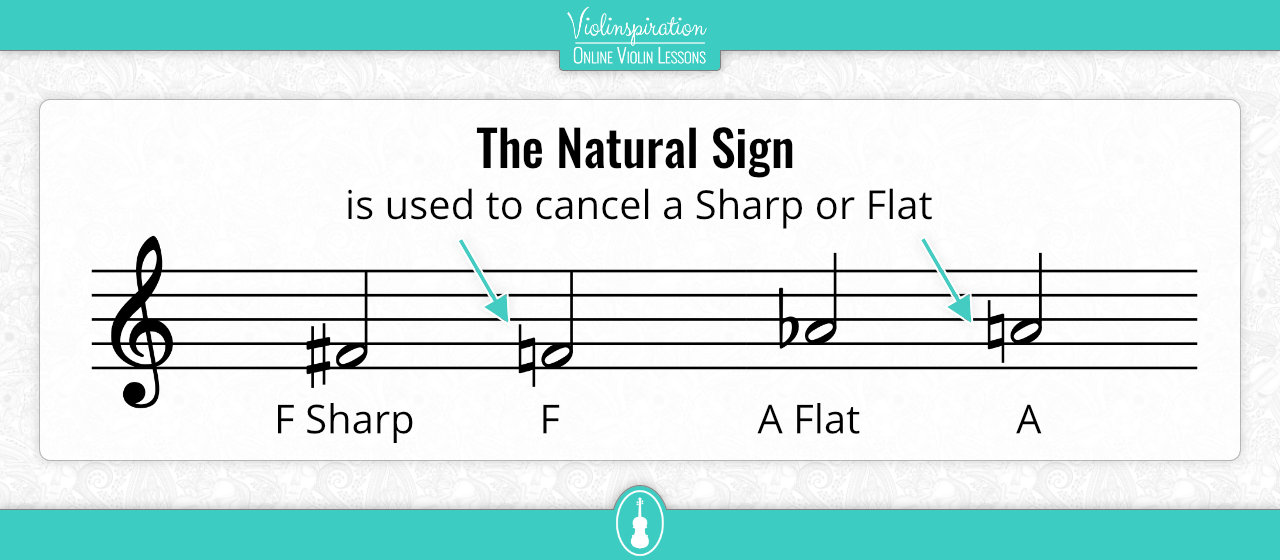
How do Key Signatures Work?
A key signature is the set of accidentals (sharps and flats) placed next to the clef in sheet music. It tells the musician which notes to play sharp or flat in a music piece. This is done by adding the accidental to the line of the note that needs to be played flat or sharp throughout the piece.
Start by having a look at the following sequence of notes:

Now, let’s imagine the composer decides to change each B in his composition to a B flat. The sequence of notes now looks like this:

As you can see, a flat sign was added before each “B” in the piece.
These were only two lines. But let’s imagine the composer has a piece a few pages long.
It would be a lot of work to add a flat sign in front of every B note.
That is why musicians invented “Key Signatures”.
They made a rule that, instead of adding a flat sign before each note that needs to be flat, you can also add a flat sign at the beginning of a piece, right next to the treble clef.

You can add the flat sign to the line of the note instead. This is called a key signature.
How Many Violin Key Signatures Are There?
In total, there are 15 key signatures.
Here you can see an overview of each of the key signatures:
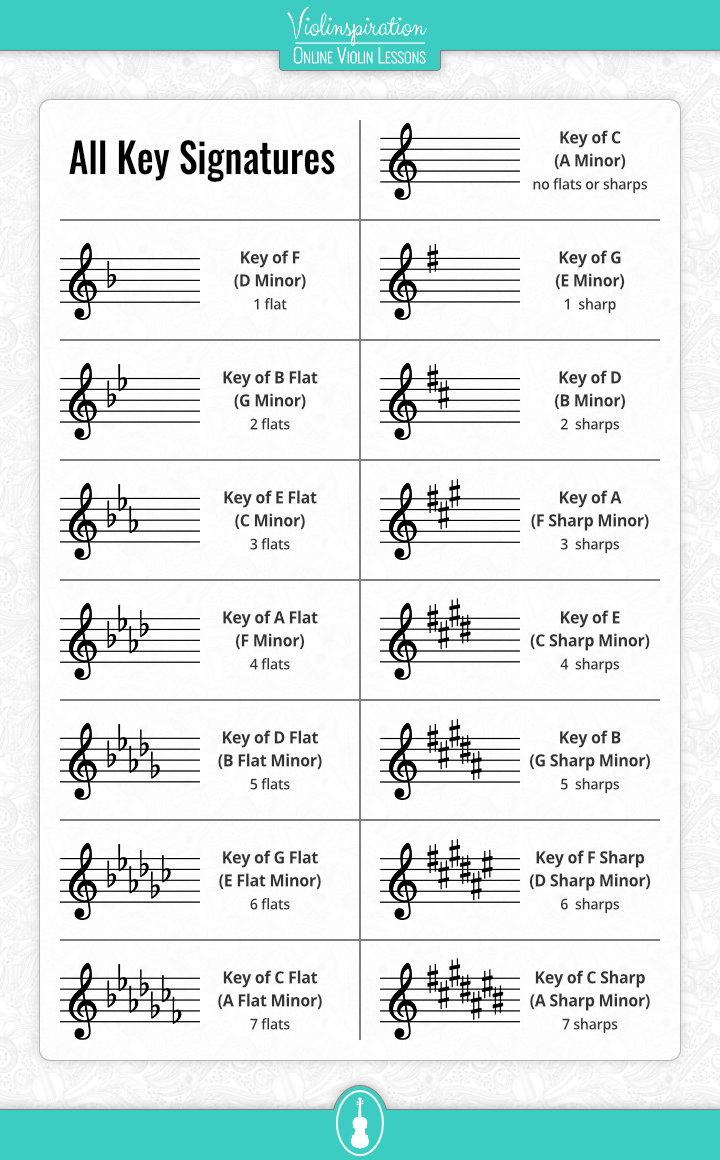
Some key signatures, such as the key of F sharp, B, G flat or C flat are rarely used on the violin and only in very advanced pieces.
As a beginner violinist, you can play almost all pieces by only learning scales in the following keys:
Key of C, F (1flat), B (2 flats) flat, G (1sharp), D (2 sharps), A (3 sharps)
If you get a little more advanced, you might also want to add the key signatures of E (4 sharps), E flat (3 flats) and A flat (4 flats).
Why Does Each Key Signature Have Two Names?
Each key signature has two names – one “Major” name, and one “Minor” name.
For instance, the Key of C Major can also be called “The Key of A Minor”.
The minor key signature with the same flats or sharps of the major key signature is called “the relative minor“.
So A Minor is the relative minor of C Major.
If you see a piece that has the key signature of C Major / A Minor – how do you know in which one of the keys the piece is written?
Simple!
Just look at the LAST note of the music piece.
Is it an A? Usually, the piece will be written in A minor.
Is it a C? Usually, the piece is written in C Major.
To be absolutely transparent: there are a few exceptions to this rule, but as this rule works for 99% of violin pieces, I will not go into too much detail in this post. It would make the theory a LOT more complicated and most beginner-intermediate violin players will not benefit from this knowledge.
How Many Music Keys Are There?
There are 12 notes in total – and each note has a major key signature and a relative minor. That means that in total, there are 12 x 2 = 24 music keys.
This is also the reason why Bach wrote 24 Fuga’s and Preludes for piano – one for each of the key signatures.
This is me totally guessing (I did not find any evidence for this) – but this might also be one of the reasons Paganini decided to write exactly 24 caprices for violin as well.
Even though the caprices are not written in each one of the 24 key signatures (this would be unpractical on the violin), he might have been inspired by Bach to choose the number 24.
What is the Circle of Fifths?
The circle of fifths is an easy way to present all major key signatures with their relative minor key signatures.
The minor keys are represented in the inner circle. The major keys are shown on the outer circle.
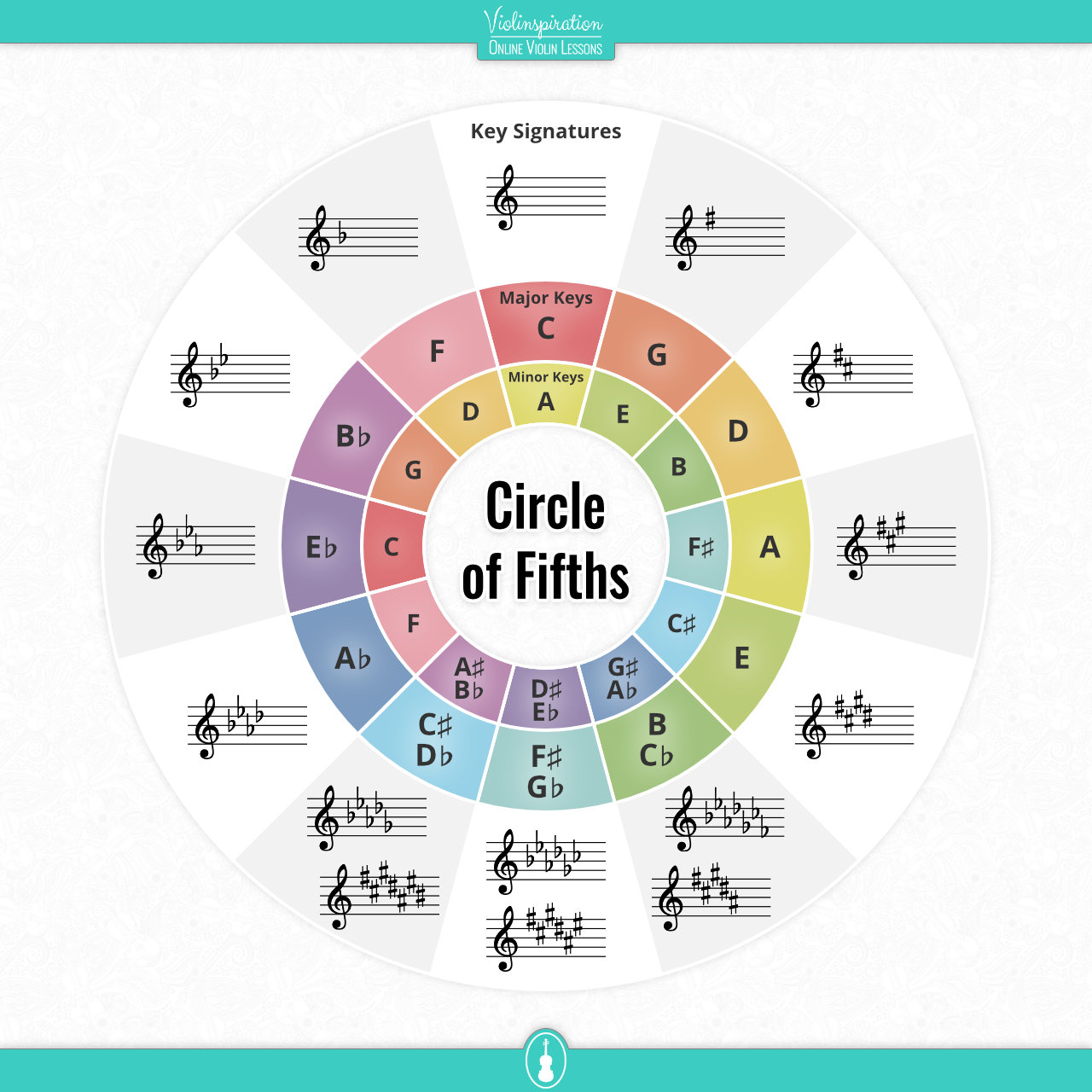

Printable Circle of Fifths
color and grayscale version
Order of Sharps and Flats
In a key signature, flats and sharps are always added in the same order.
If you have one sharp, it will always be F#. If you have two sharps they will always be F# and C#.
There can never be only one sharp that is a C# – if there is only one sharp, it will always be the F#.
An easy way to remember the order that sharps are added to a key signature is the following sentence:
“Fat Cats Go Down Alleys Eating Birds.”
For the flats that get added to a key signature, you can remember “Before Eating A Donut, Get Coffee First.”
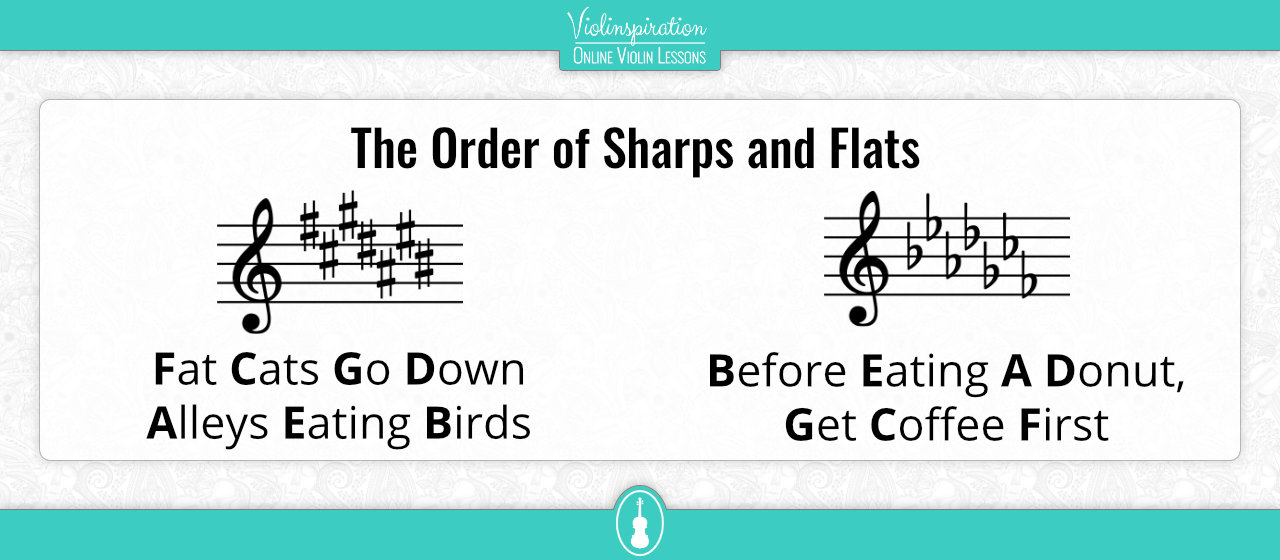
Another way to remember the flat key signatures is to remember only the first sentence and to reverse the words (“Birds Eating Alleys Down Go Cats Fat”).
Are Scales Associated with Key Signatures?
Yes – for each music key there is one scale. As we have 24 music keys, there are also 24 violin scales in total.
That is the reason the most famous scales book for violinists, “Carl Flesch’s Scale System” features exactly 24 scales.
Further Reading
If you would like to learn more about reading notes on the violin, make sure to check out my post Violin Notes for Beginners.
In this post, I lay out the 5 steps you need to take to learn to read notes on the violin (it is not as hard as it seems!). This post is perfect for someone who just started their note reading journey and wants to recognize all basic notes and signs in violin music.
If you are a member of Julia’s Violin Academy, check out the following resources:
- The full step-by-step Note Reading course in which you will learn to read notes on the violin with about 14 hours of classes, worksheets and sightreading practice pieces. If you follow the steps and homework in this course, you will be able to sight-read any beginner to lower intermediate violin pieces.
- The 1.5 hour lesson series on violin key signatures, in which you will learn how to use key signatures in practice. By the end of this series, you will understand if you have to play any note high or low (such as the second or third finger) in any piece.
